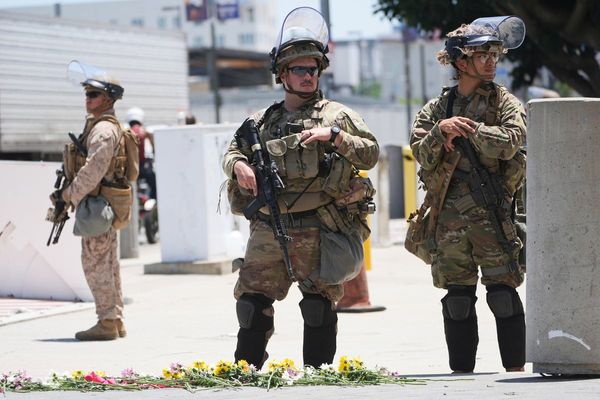
At least 27 migrants have died after two boats carrying nearly 100 people capsized off the Italian island of Lampedusa while trying to cross the Mediterranean Sea from Libya. Around 60 survivors were rescued from the waters, while search operations continue for those still missing.
The tragedy unfolded when one boat began taking on water, forcing passengers to transfer to the second vessel. However, the second boat also capsized under the weight and rough sea conditions, leaving dozens of people struggling in the Mediterranean waters.
Among the survivors was a Somalian woman who gave a heartbreaking account of losing both her one-year-old daughter and husband during the disaster. “All hell broke loose,” she told the Rome-based newspaper La Repubblica. “I never saw them again, my little girl slipped away, I lost them both.” The woman’s testimony highlights the human cost of one of the world’s most dangerous migration routes.
Dangerous journey claims more lives in Mediterranean crossing
The boats departed from the Tripoli area in Libya early Wednesday morning carrying migrants hoping to reach Europe. An Italian law enforcement aircraft spotted the capsized vessel and bodies in the water approximately 14 miles from Lampedusa, triggering immediate rescue operations by the Italian Coast Guard and other emergency services.
Survivors told rescue workers that around 95 people had been traveling on the two boats when the first vessel began taking on water. “We had set out on two boats, but one capsized, so we all climbed aboard one of them. But then the other one also started taking on water,” one survivor explained to La Repubblica. The exact cause of the capsizing has not been confirmed, but overcrowding and poor sea conditions likely contributed to the disaster.
Boat carrying 92-97 Migrants capsizes offcoast in #Lampedusa #Italian Island. 2 departed from #Tripoli.
— Dr. Subhash (@Subhash_LiveS) August 14, 2025
26 dead, several missing. Italian Coastguards are on Rescue ops. #GiorgiaMeloni emphasised on need to curb #HumanSmuggling & prevent illegal departures#ILLEGALimmigrants pic.twitter.com/HfXIdm6Ong
Italian Prime Minister Giorgia Meloni expressed her condolences to the victims and condemned the human traffickers, a stance that contrasts sharply with debates over immigration policy and citizenship status in other political contexts, who organize these dangerous journeys. “When a tragedy like today’s occurs, with the deaths of dozens of people in the waters of the Mediterranean, a strong sense of dismay and compassion arises in all of us,” Meloni said in a statement. “And we find ourselves contemplating the inhumane cynicism with which human traffickers organise these sinister journeys.”
The Prime Minister’s comments reflect growing concern about the ongoing migration crisis and the role of criminal networks in facilitating dangerous sea crossings, highlighting how international conflicts and political decisions continue to impact global migration patterns.
Mediterranean remains the deadliest migration route in the world
This latest disaster adds to the growing number of deaths on the central Mediterranean route, which is considered one of the most dangerous migration paths in the world. According to the UN’s refugee agency, more than 700 people have died trying to cross the central Mediterranean this year, not including this latest tragedy. The International Organization for Migration reports that at least 25,000 people have gone missing or been killed while attempting to cross the central Mediterranean since 2014.
The island of Lampedusa, located between Tunisia and Sicily, serves as a primary landing point for migrants crossing from North Africa. The island’s migrant reception center is frequently overcrowded, with challenging living conditions for those who survive the journey. In the first six months of 2025, more than 30,000 refugees and migrants arrived in Italy by sea, representing a 16 percent increase compared to the same period last year.
Those who attempt the Mediterranean crossing often travel in poorly maintained and overcrowded vessels operated by human smuggling networks. Most boats depart from the coasts of Tunisia and Libya, where migrants from various African countries gather hoping to reach Europe. The deadliest shipwreck in Lampedusa’s history occurred on October 3, 2013, when a boat carrying over 500 migrants from Eritrea, Somalia and Ghana caught fire and capsized, killing at least 368 people. That tragedy led Italy to establish an annual day of remembrance for victims of Mediterranean crossings.







